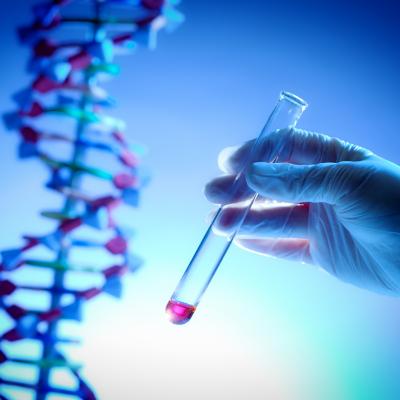Anúncios
Mapping the human genome has revolutionized medical science by enabling the complete reading of DNA. This achievement has opened doors to better understanding diseases, providing more accurate diagnoses, and developing personalized therapies. Since the Human Genome Project, completed in 2003, advances have continued to evolve rapidly.
Understanding the genetic sequence allows for more effective interventions and prevention strategies tailored to each individual. As a result, doctors and scientists can act more assertively in combating genetic and chronic diseases. Personalized medicine is one of the greatest outcomes of this biotechnological breakthrough.
Anúncios

How does human genome mapping work?
Mapping the human genome is a complex process involving the identification and analysis of the sequence of nucleotides that make up human DNA. DNA, the genetic material, is composed of four nitrogenous bases: adenine (A), thymine (T), cytosine (C), and guanine (G). The order of these bases determines the genetic instructions that control the development, functioning, and reproduction of organisms. The genome mapping project, known as the Human Genome Project, began in 1990 and was completed in 2003, resulting in the first complete sequence of human DNA.
Human genome mapping involves several steps, including collecting DNA samples, extracting and sequencing the genetic material. DNA sequencing is carried out using advanced technologies, such as next-generation sequencing (NGS), which enables fast and accurate reading of nucleotide sequences. After sequencing, the data is analyzed and compared to reference genomes to identify genetic variations. These variations may be associated with specific diseases or traits, providing valuable information for medical research and the development of personalized treatments.
Additionally, human genome mapping involves genetic annotation, where scientists identify genes, regulatory regions, and other functional sequences in the genome. This annotation is crucial to understand how genes interact with each other and how they influence health and disease. With the growing amount of available genetic data, new tools and bioinformatics methods are being developed to facilitate data analysis and interpretation, allowing significant advances in personalized medicine.
Finally, mapping the human genome is not an isolated process but part of a collaborative effort involving scientists, doctors, and researchers from various disciplines. The exchange of information and collaboration between different institutions have been fundamental to accelerating progress in understanding the human genome and its implications for health. As new discoveries are made, human genome mapping continues to open new doors for medicine and biomedical research, revealing the potential for more effective and personalized treatments.
Advantages of Mapping the Human Genome for Medicine
Mapping the human genome has brought a number of significant advantages to medicine, transforming how we understand and treat diseases. One of the main advantages is the ability to identify genetic predispositions to health conditions. By analyzing genetic variations in individuals, doctors can predict the risk of developing certain diseases, such as cancer, heart disease, and diabetes. This information allows for early interventions and personalized prevention strategies, improving health outcomes.
Another important advantage of human genome mapping is the possibility of developing personalized treatments. Personalized medicine considers the genetic characteristics of each patient when formulating a treatment plan. With knowledge of the genetic variations that affect drug response, doctors can choose more effective therapies and minimize side effects. This is especially relevant in areas like oncology, where tumor genetics can determine treatment choices.
Furthermore, human genome mapping facilitates the research of new therapies and medications. Understanding the genetic bases of diseases allows scientists to identify therapeutic targets and develop innovative treatments. Genetic research can also lead to the discovery of biomarkers, which are biological indicators that help diagnose diseases early and monitor treatment effectiveness. This is crucial for advancing the development of safer and more effective drugs.
Lastly, mapping the human genome promotes collaboration between different areas of medicine and research. Sharing genetic data and discoveries among institutions and researchers enables a more integrated approach to understanding diseases. This collaboration not only accelerates scientific progress but also allows patients to benefit from new findings more quickly. In short, the advantages of mapping the human genome for medicine are vast and impactful, offering a new perspective on healthcare.
How Can Human Genome Mapping Transform Health?

Mapping the human genome has the potential to transform health in various ways, bringing benefits to both patients and healthcare professionals. First, the ability to perform genetic testing allows individuals to know their genetic profile, helping them make informed decisions about their lifestyle and healthcare. This is especially relevant for people with a family history of genetic diseases, who may choose to monitor their health more rigorously or consider preventive interventions.
Identification of hereditary diseases: Human genome mapping enables the identification of hereditary diseases, allowing individuals and their families to understand risks and seek genetic counseling. This is crucial for planning family health and making informed reproductive decisions.
Early diagnosis: With genetic analysis, doctors can diagnose diseases in their early stages, before symptoms appear. Early diagnosis is essential for effective treatment and can lead to better prognoses and quality of life for patients.
Personalized treatments: Human genome mapping allows doctors to personalize treatments based on each patient’s genetic characteristics. This means patients can receive specific therapies that are more effective for their conditions, increasing treatment success rates.
Disease prevention: By understanding genetic predispositions, health professionals can develop prevention strategies tailored to each individual. This may include lifestyle changes, regular monitoring, and appropriate medical interventions, reducing disease incidence.
Advances in medical research: Human genome mapping drives medical research, leading to the discovery of new biomarkers and therapeutic targets. This results in innovative treatments and the improvement of existing therapeutic approaches.
Education and awareness: Knowledge about the human genome promotes education and awareness about the importance of genetic health. This helps demystify genetic issues and encourages people to actively engage in their health.
These health transformations not only benefit individuals but also have a positive impact on society as a whole. With the implementation of practices based on genetic data, the disease burden is expected to decrease, leading to a healthier population and more efficient healthcare systems. The ability to personalize care and interventions represents a significant advancement in medicine, allowing healthcare professionals to address health challenges more effectively and with a patient-centered approach.
What Is Human Genome Mapping
Human genome mapping consists of identifying the complete sequence of DNA nucleotides. It reveals the order of the bases A, T, C, and G, which encode the genetic information of humans. Each sequence represents fundamental instructions for life.
This process involves sample collection, DNA extraction, and analysis using technologies such as NGS. Modern sequencing has become more accessible, faster, and more accurate thanks to technological advances. It allows for comparing genomes from different individuals to identify relevant variations.
These variations can explain genetic differences that influence disease predisposition. Moreover, they help understand different responses to medications, which is vital for personalized medicine. The analysis enables the development of more effective treatments.
Genetic annotation is another crucial step, as it identifies functional regions and genes in DNA. This expands knowledge of how genes function in the body. This genetic foundation is essential for more accurate medical interventions.
Technological Advances in Genetic Sequencing

Sequencing technology has evolved greatly since the first genetic studies. Next-generation sequencing (NGS) allows millions of DNA fragments to be decoded simultaneously. This has increased speed and reduced the costs of genetic analysis.
More recent techniques include third-generation sequencing, which reads larger fragments. This approach provides a clearer picture of complex genome regions. It also improves the detection of rare structural mutations.
The use of artificial intelligence and big data in bioinformatics has revolutionized genomic data interpretation. These tools enable large volumes of information to be analyzed efficiently. This contributes to faster and more accurate diagnoses.
In addition, new platforms allow direct-to-consumer genetic testing. These tests provide information about ancestry and health based on DNA. The popularization of these tools has raised awareness of personal genetics.
Did You Enjoy Learning About Human Genome Mapping and Its Implications for Medicine?
Human genome mapping is a fascinating field that continues to evolve and impact medicine in profound ways. As new technologies and approaches are developed, the possibilities for understanding and treating diseases expand, offering hope and significant improvements in people’s quality of life. The knowledge gained from mapping the human genome not only enriches medical science but also empowers patients to become active participants in their health.
If you’re interested in human genome mapping and its implications for medicine, there is a world of discoveries and innovations waiting for you. Keeping up with advances in this field can open new perspectives on how to care for your health and improve overall well-being. Stay informed and continue exploring this highly relevant and promising topic.
Frequently Asked Questions
What is human genome mapping?
It’s the process of identifying and recording all the genes in human DNA. You know, it’s like reading the body’s instruction manual!
What are the implications of human genome mapping for medicine?
It helps doctors understand diseases better. That way, they can create more effective and personalized treatments. Amazing, right?
How can genome mapping help cure diseases?
With the right information, scientists can discover what causes certain diseases. That can lead to new cures!
Is human genome mapping safe?
Yes, but it requires care. It’s important to protect personal data to ensure the security of health information.
Can everyone get their genome mapped?
Yes, anyone can! But it’s a good idea to talk to a doctor first. That way, you can better understand what this information means for you.
